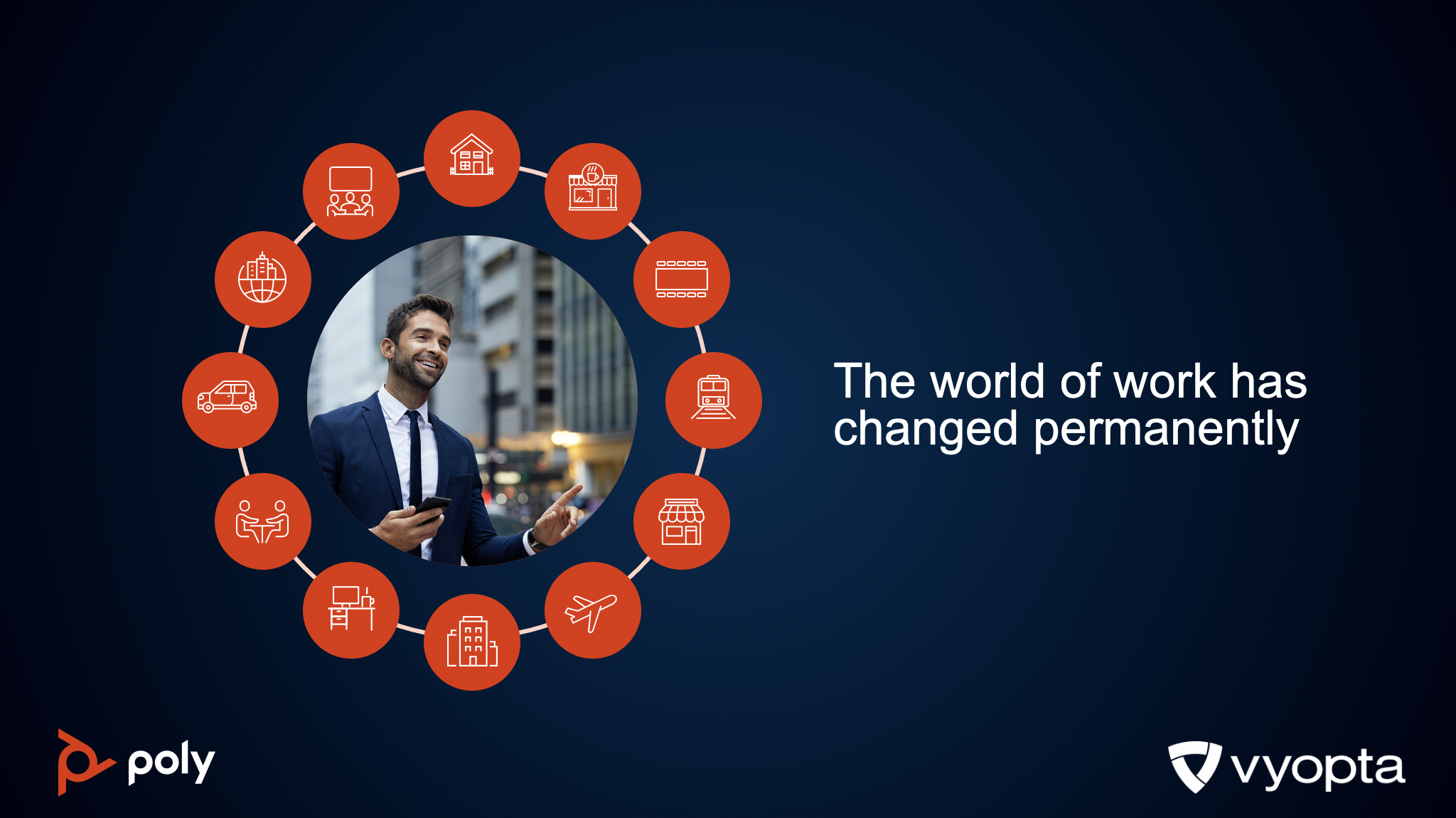.png)
As many companies moved to remote work in the early stage of the Covid-19 pandemic last year – with the ongoing move to hybrid work still developing – there were many unexpected speed bumps that came with transitioning millions of workers into a situation where they were working away from their colleagues.
The difficulty that came with that shift looked like this: lots of dropped calls with poor audio, problems getting meetings started on time with full attendance, and a loose or nonexistent structure for how online meetings would be structured.
That might have been a “grin and bear it” reality at the time since the business world at large expected that a full-fledged return to work would take place by late 2020 or early this year.
But with enterprise organizations all over the world delaying their returns or scrapping them indefinitely, the hybrid work stopgap solution that seemed like an in-between move on the way to a full return now looks like it will be more permanent for most organizations around the world.
That means those intermittent nagging problems around collaboration and communication are very likely getting to the point of becoming significant limiting factors in how well organizations will be able to perform.
Some organizational consultants have found that currently up to 50 percent of remote meeting time is wasteful or poorly managed. With knowledge workers now having 20 percent of their work time spent in those meetings, that equals 10 percent of payroll producing little to no benefit.
Executives who realize their organizations are being hamstrung by technology issues and bad habits tied to how their people communicate and collaborate need to take action to correct those.
Over time there will be a revenue, product innovation, customer services and overall growth divide between organizations that are high performing around hybrid work best practices versus those who never empower their employees to do so.
Hybrid Work Demands Ongoing Training
One important step is instituting a structured training program to make sure tools and all technology are being used appropriately, and giving all employees the intelligence to manage and optimize virtual meetings and call user experiences as effectively as possible.
Based on meeting science research, media richness theory asserts that richer communication channels, such as in-person interaction, are best suited to communicating complex information and ideas.
Moreover, media synchronicity theory proposes that asynchronous communication channels (such as email) are better suited for conveying information and synchronous channels (such as video calls) are better suited for converging on the meaning of information.
There is also a rich body of empirical research that documents the myriad implications of communication media choice for organizations. For example, previous research has shown that establishing rapport, which is an important precursor to knowledge transfer, is impeded by email use, and that in-person and video communication are more strongly associated with positive team performance than all other communication.
Optimizing collaborative work and user performance in virtual meetings using with video communication in the world of hybrid work requires focused thinking about how to best assemble and engage the relevant parties, including managing a mix of people gathered together in the same space as well as those attending remotely.
Just this simple task of holding a meeting to brainstorm on a project can be improved by taking the time for focused training around how people work best, and how they can best use the resources available.
Executives can start by identifying the best practices and tools they prefer the company use to hold virtual meetings and enable collaboration, with scheduled trainings and always-available educational resources that help users improve how they use Zoom, Microsoft Teams and other applications that have become commonplace.
Taking this step in making best practices and technology education a priority can help to wipe away assumptions about how things “should” work, fill knowledge gaps and reduce anxiety for workers (virtual meeting hosts and participants) who may still feel uncomfortable with significantly more digital-first work in their day.
The issue of workers having to make the best with unfamiliar technology and drastically changing work demands is so dire, that our recently released survey of top executives across the country found that only two-thirds of them fully trust their people to properly use the technology that supports virtual meetings.
Clearly, training needs to be improved and made an ongoing part of yearly strategic plans to continually improve team collaboration skills and competency.
On the behavior side of things, there is much to do around helping workers to gather digitally and make the most of their collaboration time on projects and long-range priorities. This starts simply with defining the purpose and scope of the meeting for everyone involved, and making sure that there is a confirmed understanding of the “when?” and “why?” of the time commitment beforehand.
Of course some delays and interruptions are unavoidable, but the simple act of starting a meeting at the appointed time with no stragglers can keep engagement high and prevent the session from lasting longer than planned because of too much time spent helping latecomers catch up.
Making sure everyone involved reviews the purpose of the meeting, agenda, information made available ahead of time and checks in on time can have a positive cascading effect, too, since meetings focused on achieving the purpose will positively reinforce people staying involved and sticking to their schedule going forward.
The business world has entered a phase where we need to think about ongoing training and education as a must-have operational practice instead of a “nice to have” add on. Delaying the investment in developing collaborative work skills and competency of the workforce allows what started as annoyances and nagging little problems to persist, which over the long run will become a very expensive problem.
To learn more about successfully navigating hybrid work, download our new ebook.

Alfredo Ramirez is a seasoned entrepreneur with direct experience in building early-stage software technology companies, which is why he proudly serves Vyopta as CEO and Co-Founder. A nod to his passion for pushing the button of innovation, Alfredo previously co-founded Vitalz (a venture backed enterprise software company acquired by Oracle) and Daman Consulting. He holds a B.S. in Electrical and Computer Engineering from The University of Texas at Austin and writes about topics such as technology, employee engagement, and innovation from the CEO perspective. .


.png)

